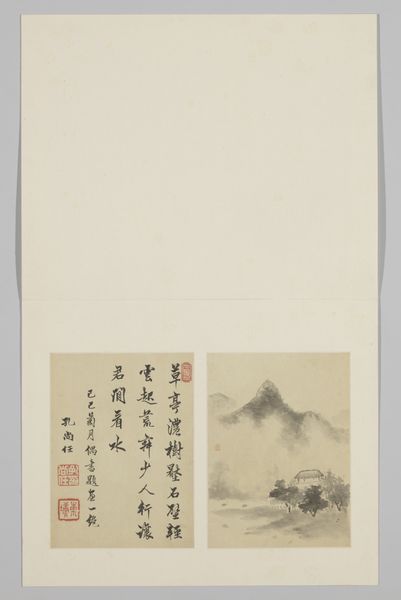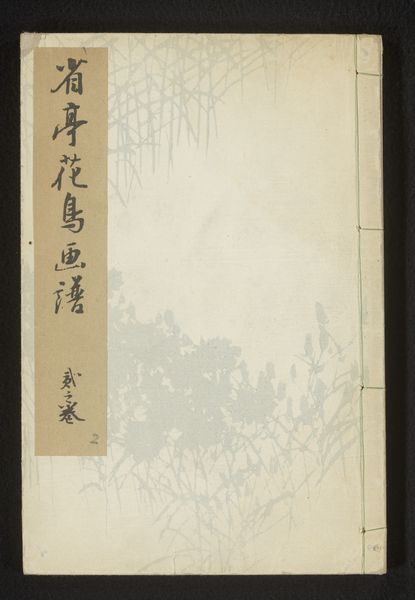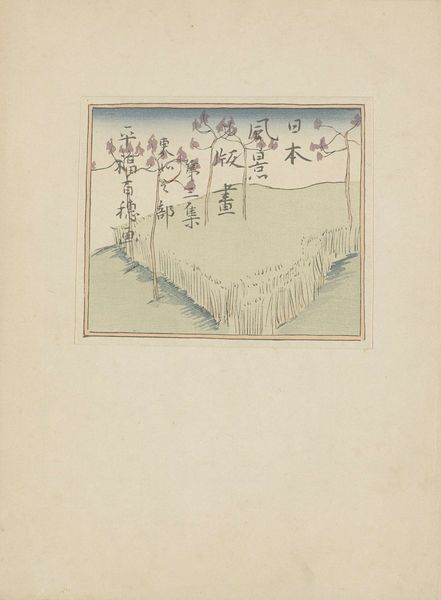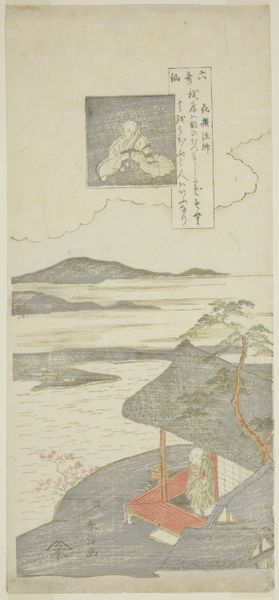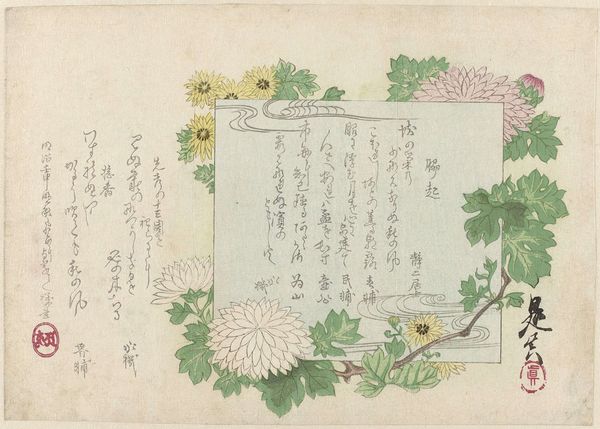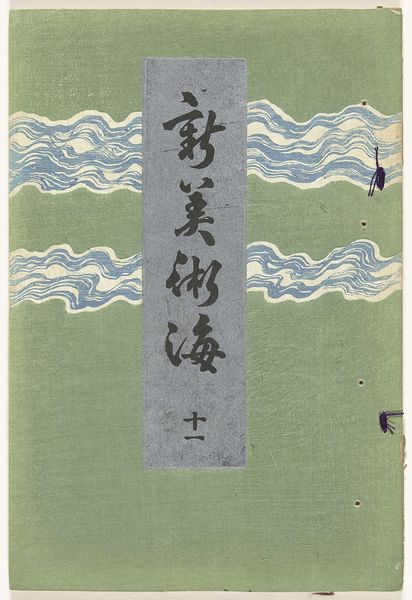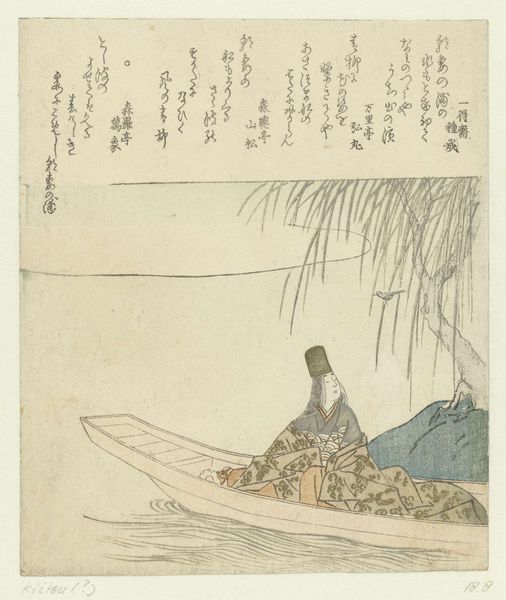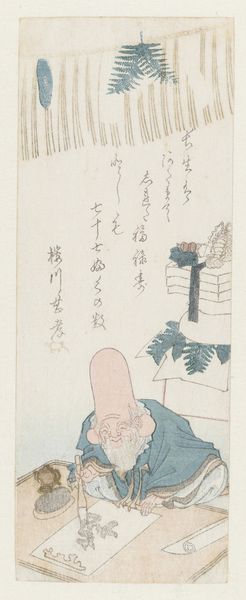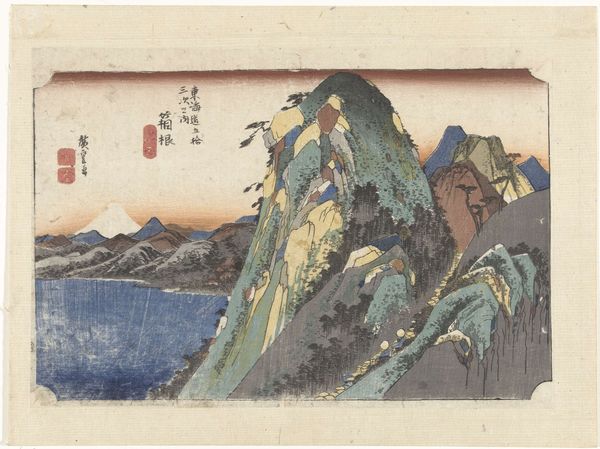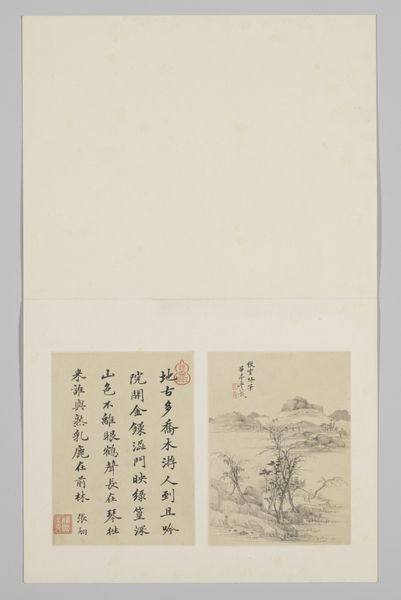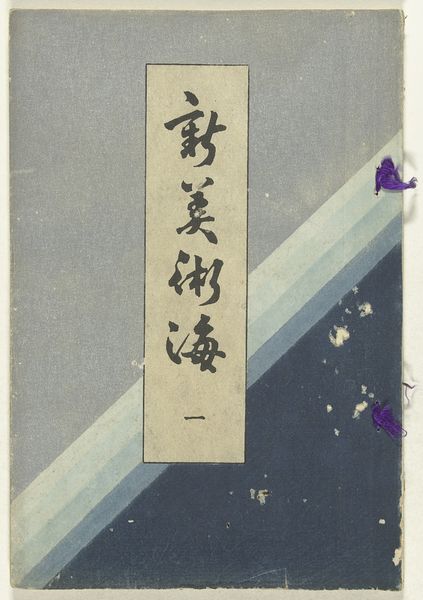
#
aged paper
#
blue ink drawing
#
old engraving style
#
personal sketchbook
#
ink drawing experimentation
#
ink colored
#
pen work
#
sketchbook drawing
#
watercolour illustration
#
sketchbook art
Dimensions: height 332 mm, width 250 mm, height 315 mm, width 417 mm
Copyright: Rijks Museum: Open Domain
Curator: Well, what's your initial response to this understated rendering? Editor: Austere, but striking. There’s a clear sense of labor present—the lines are economical yet precise. It evokes the craft of printmaking more than high art in some ways, doesn't it? Curator: I would like to introduce Morita Tsunetomo's 1917 work, "Deel twee, Aizu gebied," currently held at the Rijksmuseum. We see a landscape of the Aizu region, articulated in ink and light washes. Its quietude belies its depth. Do you sense the historical echoes embedded here? Editor: The use of aged paper really emphasizes the physical history; it grounds the scene. The visible grain and texture invite us to consider the production process—the choice of materials, the layering of ink. Is that texture printed in there? Or a drawing style? It makes me want to understand Tsunetomo’s engagement with the natural world. Curator: Note how the traditional Japanese artistic practice emphasizes the landscape. The towering tree, the receding mountains…it all contributes to a sense of place, but also to something larger, some notion of connection to nature’s enduring presence. The limited palette heightens that, lending it an iconic simplicity. Editor: The 'personal sketchbook' quality of this piece suggests something about art and labour and accessibility; the idea that artistic vision can take shape even outside the established art market is palpable. Does that aesthetic tradition carry some historical association here? I suspect this relates to some kind of movement, school, or practice beyond just visual fidelity. Curator: Undoubtedly, that's quite perceptive. This work reveals how artistic expression has manifested in the cultural history of Japan. Perhaps it’s less about high art and more a personal experience that then becomes shared—imbued with emotional, cultural significance for generations. Editor: Exactly. Considering the political environment in the early 20th century, was printmaking such as this employed as means to share cultural touchstones and traditions under rising modernity? Curator: Certainly a means of recording memory and history while connecting society through iconography and art. This allows symbolic messaging and accessibly without high cost. It allows a democratic cultural symbolism to emerge in a variety of visual forms. Editor: So, it’s about both the depiction and dissemination; that the medium *is* the message? Curator: Precisely, one that continues to speak across time. Editor: Looking again, its subtlety now resonates much more powerfully than before. Curator: Indeed, and perhaps we can consider the image through a greater consideration of our society and the ways in which its history is visualized and recorded through iconography, such as these landscape motifs in print.
Comments
No comments
Be the first to comment and join the conversation on the ultimate creative platform.
